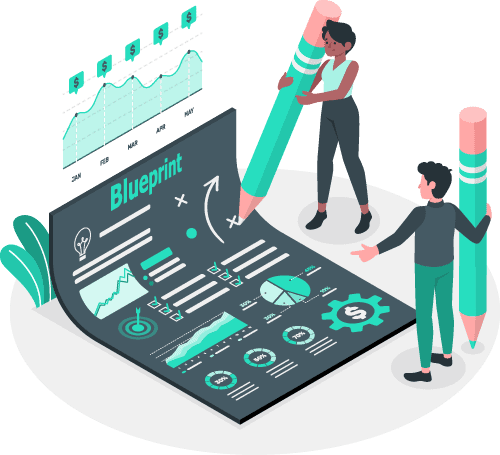I’ve tested nearly every online business model over the past decade. Some generated income within weeks. Others took years to yield returns. Ecommerce sits somewhere in the middle, but not in the way most beginners expect.
It sounds simple: list products, run ads, collect orders. But the reality involves complex math around customer acquisition costs, inventory decisions, and profit margins that can shrink to single digits after all expenses.
This article breaks down whether ecommerce is worth your limited time and capital in 2025, using real data and honest assessments of what actually works for solopreneurs.
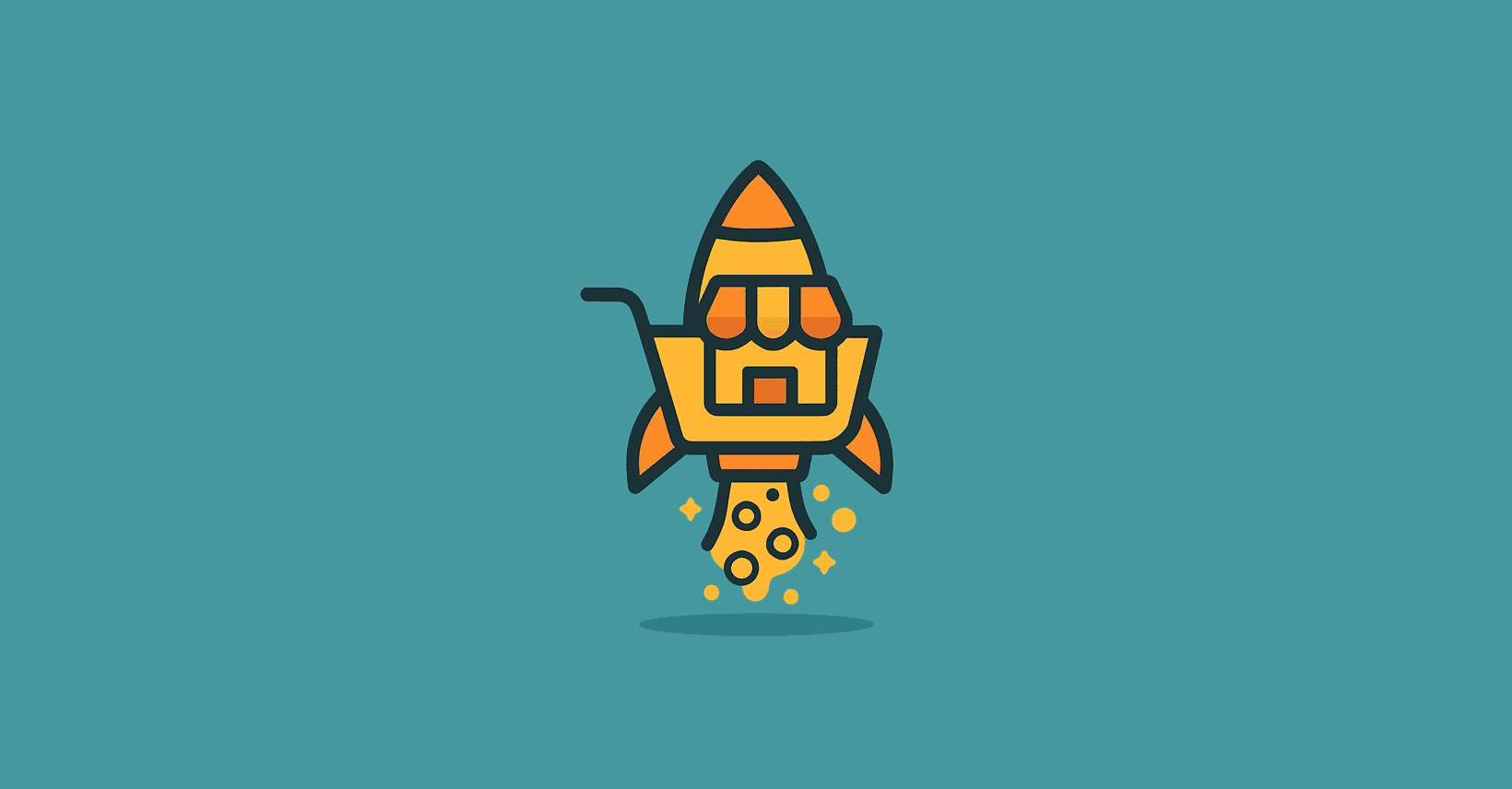
What Ecommerce Actually Is
Ecommerce means selling physical or digital products through your own online store or established marketplace platforms. You control pricing, branding, and customer relationships in ways that affiliate marketing or freelancing don’t allow.
I thought ecommerce meant ‘build it and they will come’ when I started. List some products, maybe run a few Facebook ads, watch orders roll in. That fantasy died in week three when I’d spent $400 on ads and made exactly two sales – both from family members who felt bad for me.
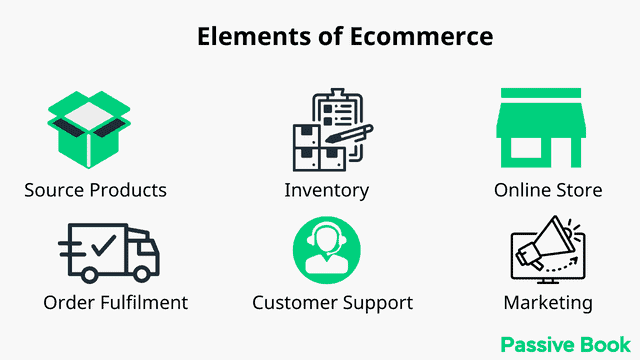
Global ecommerce sales reached $6.3 trillion in 2024, with small businesses capturing significant market share. The ecommerce landscape in 2025 offers more accessible ecommerce platforms and tools than ever, but also more competition for customer attention.
Revenue comes from product sales minus substantial costs: inventory, shipping, digital marketing, platform fees, and returns. Many beginners confuse gross revenue with actual profit margins and discover too late that net profit margins often sit below 20% after all expenses.
Julie Berninger built a $10,000+ monthly Etsy printables business as a solopreneur. Her success demonstrates ecommerce viability at small scale, particularly with digital products that eliminate inventory costs.
This model works when your customer lifetime value exceeds acquisition costs by 3x or more. Most failed stores never solve this fundamental equation.
Why 80% Ecommerce Stores Fail
I launched my first ecommerce store in 2013 with high hopes and a $1,200 budget. Within four months, I’d burned through the capital testing products that generated clicks but few purchases. The store closed after six months with a net loss of $890.
This experience mirrors broader industry trends. 80% of ecommerce businesses fail within the first five years due to poor marketing execution and cash flow mismanagement. Most entrepreneurs underestimate marketing costs and the difficulty of acquiring profitable customers.
Unlike content businesses that scale with minimal marginal costs, ecommerce demands continuous capital for inventory and advertising before revenue arrives. You’re funding operations months before seeing returns, creating cash flow pressure that kills most bootstrapped stores.
Ecommerce punishes undercapitalized founders who can’t sustain 6-12 months of testing and refinement. That initial budget isn’t startup capital; it’s tuition for expensive lessons about what doesn’t work in your niche.
Customer Acquisition Costs
Average customer acquisition costs range from $45-$200 depending on industry, often exceeding first-purchase profit margins. This means your first sale with each customer loses money, requiring repeat purchases to achieve ecommerce profitability. Sustainable profits require that customer lifetime value exceeds acquisition costs by 3x or more through repeat purchases and customer retention strategies.
Meta ads average CPC varies by industry, typically $0.50-$2.00 per click with ecommerce seeing competitive rates. At 2-3% conversion rates, you need 33-50 clicks per sale.
Improving your conversion rate from 2% to 3% cuts customer acquisition costs by 33%, making the difference between profitable and failing stores. Most beginners ignore conversion rate optimization and pour money into paid advertising without fixing their ecommerce platform’s user experience first.
With a $500 ad budget, you afford 250-1000 clicks depending on your niche. At 2-3% conversion, that’s only 5-30 orders.
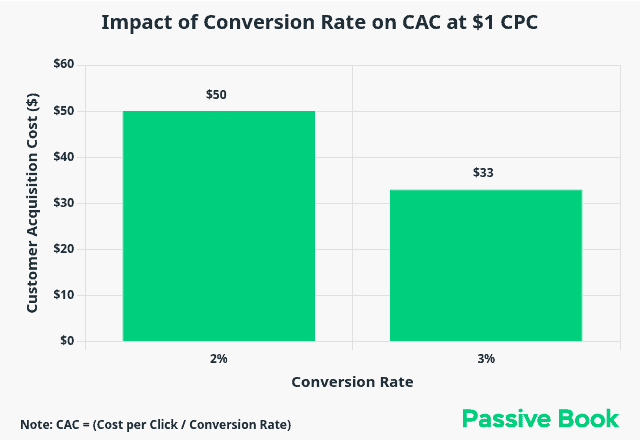
This volume is insufficient for meaningful product validation or profitable scaling. This math explains why ecommerce requires a 6-12 month capital runway for continuous reinvestment. You’re not spending money once; you’re funding an ongoing testing process until you find winning products and audiences.
Competition & Market Saturation
Digital ad spending increased 10.5% globally in 2024, making paid acquisition increasingly expensive for bootstrapped stores. Auction-based ad platforms reward higher bids, pushing solopreneurs toward less competitive niches.
Over 54% of Amazon sellers now use private label, intensifying competition in formerly niche categories. Generic products face margin compression as multiple sellers compete on price alone.
Apple’s iOS privacy changes reduced Facebook ad targeting precision, increasing customer acquisition costs 20-30% for small advertisers who relied on detailed demographic targeting. The shift favors brands with existing customer data and first-party audiences.
TikTok Shop’s explosive growth created boom-bust cycles for solopreneurs chasing viral trends. Products that generate $10,000 in week one often see demand collapse by week three as the algorithm moves attention elsewhere.
Technical and Operational Complexity
Managing inventory management, returns, shipping logistics, and customer service simultaneously creates operational overhead that most beginners underestimate. Inventory management alone demands attention to reorder points, storage costs, and dead stock risks that eat into profit margins.
Research shows 48% of shoppers abandon carts due to unexpected costs or complicated checkout processes. Your store’s technical setup directly impacts conversion rates, making platform choice and optimization critical to profitability.
Solo Shopify store owners report spending 30+ hours weekly in the first 6-12 months on fulfillment, customer service, and marketing. This time investment exceeds most side hustlers’ available capacity of 10-20 hours weekly.
This complexity explains why I eventually focused more on content creation and digital products after burning out on ecommerce fulfillment. Those models eliminate inventory, shipping, and fulfillment overhead.
3 Ecommerce Business Models
Dropshipping, print-on-demand, and private label each offer distinct tradeoffs between profit margins, capital requirements, and operational complexity. Choose based on available budget and time constraints, not aspirational goals. Your target market and available resources should dictate which model you test first, not which sounds most exciting.
Here’s what the gurus won’t tell you: the highest-margin model (private label) requires capital most bootstrapped founders don’t have. The easiest model (dropshipping) has margins so thin you’ll need hundreds of sales per month to quit your job. And the middle option (print-on-demand) only works if you can design or pay for designs that don’t look like generic Canva templates.
Dropshipping: 10-30% Margins
Andreas Koenig and Alexander Pecka built a profitable pet dropshipping business after three failed attempts as solopreneurs. Their success required a full year of testing and refinement before achieving consistent ecommerce profitability.
The supplier handles inventory storage and shipping while you keep the margin between wholesale and retail prices. This eliminates inventory risk but creates thin margins demanding high volume for meaningful profit.
Net profit margins land between 10-30% after accounting for product costs, shipping, platform fees, transaction fees, and marketing expenses. Improving your average order value through upsells and bundles is essential for dropshipping profitability since per-order margins are so thin. A $29.99 product with $15 cost, $3 shipping, and $4 in ads yields about $8 net profit per sale.
Dropshipping requires intensive marketing and constant product testing to compensate for low per-sale margins. Plan for startup costs of $500-1000 covering Shopify at $39/month plus initial ad testing budget of $300-500.

Print-on-demand: Zero Inventory
A $24.99 t-shirt with $12 base cost and $2 in platform fees yields about $11 net profit before marketing expenses. Margins range from 20-45% depending on product type and pricing strategy—better than dropshipping but lower than private label.
Products are manufactured only after customer orders through services like Printful, eliminating storage costs and unsold inventory risk. You upload designs, set retail prices, and earn the margin above base production costs.
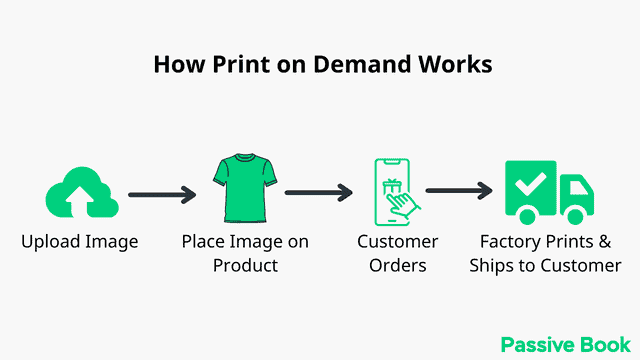
Julie Berninger’s Etsy shop generates $1,000+ monthly from bachelorette party printables as a side hustle around a full-time tech job. Her focused niche strategy demonstrates how micro-targeting beats generic product catalogs. She doesn’t sell “wedding printables”—she sells “bachelorette party games for wine-loving bridesmaids.” That specificity drives her conversion rates.
Lower profit margins than wholesale models are offset by zero inventory risk and minimal operational overhead. Focus on customer experience through fast shipping options and quality product descriptions to maximize conversion rates despite higher per-unit costs. Startup costs run $500-800 for platform setup, Printful integration, and initial ad testing budget.
Private Label: High Capital
Private label offers the best long-term margins at 50-70% gross profit through brand control and direct supplier relationships. You’re building proprietary products rather than reselling commodities.
Amazon FBA private label sellers starting with $2,000-3,000 achieve profitability in 8-12 months with quality niche products and consistent marketing. Success requires patience and capital to sustain operations before positive cash flow.
Private label demands minimum order quantities and upfront inventory investment before your first sale. A typical initial order of 500 units at $8 per unit requires $4,000 plus shipping, storage, and marketing costs.
Startup costs range from $2,000-5,000 covering platform fees, initial inventory, Amazon FBA fees, and marketing budget. This exceeds most side hustlers’ available capital, making private label better suited for second-stage businesses after validating demand through lower-risk models.

Time to See Profit: Not Just Revenue
Most ecommerce businesses achieve profitability within 12-18 months with consistent effort and adequate capital reserves. Building a profitable ecommerce store requires patience as you test products, optimize conversion rates, and build customer data that informs better targeting over time. This timeline assumes continuous testing, optimization, and capital for reinvestment.
First sales can happen within days of launching paid ads. Consistent monthly profit requires repeat customers, refined targeting, and proven product-market fit that takes months to develop.
Break-even requires $25,000-$50,000 in cumulative revenue for most small stores after the testing phase. This accounts for all startup costs, failed product tests, and the learning curve inherent in customer acquisition.
The first $300-500 in ad spending is pure testing budget, not revenue generation. Most successful stores test 5-10 products before finding winners that justify scaling spend.
This gap between first sale and consistent profitability explains why undercapitalized stores fail. They celebrate early sales without understanding the cash flow demands of scaling a profitable operation.

Time Investment Required
The first 90 days demand 20 hours weekly for store setup, product research, and initial marketing tests. This front-loaded time investment decreases as systems stabilize but never disappears.
A typical weekly breakdown allocates 30-40% to marketing and ad management, 25-30% to customer service and inquiries, 20-25% to product research and testing, and 15-20% to administrative tasks and platform maintenance.
The 10-20 hours per week sounds manageable until you’re answering customer emails at 11 PM because someone’s order shipped to the wrong address. Or you’re troubleshooting a payment gateway error on Sunday morning because your checkout broke overnight. The hours aren’t just work—they’re unpredictable and interrupt your life at random times.
47% of small business owners work 40+ hours weekly including many ecommerce solopreneurs who underestimated the operational demands. Available time (10-20 hours weekly) constrains how quickly you can test, optimize, and scale.
Budget an additional $200-300 monthly for months 2-6 to cover continued testing, essential apps, and unexpected costs like customer refunds or shipping errors. These expenses persist until you achieve consistent positive cash flow.
This time commitment makes ecommerce challenging for solopreneurs with full-time jobs and family obligations. Success requires ruthless prioritization and acceptance that growth will be slower than full-time founders achieve.
AI & Automation in 2025
Businesses using AI see 30-40% productivity improvements within the first year of implementation. For solopreneurs, this translates to handling larger order volumes without proportional time increases.
Freshworks AI chatbots handle 60-70% of routine customer inquiries automatically, improving customer satisfaction while reducing your time commitment. The technology works best for high-volume stores with predictable question patterns.
You can use Midjourney to create product mockups now, which beats the old strategy of awkward iPhone photos with bad lighting.
The AI images all have this same slightly-too-perfect look that savvy shoppers recognize immediately. You’ve leveled up from amateur to ‘obvious AI user’ which is not exactly winning brand trust.
AI-powered personalization increases conversion rates by 10-15% according to retail benchmarks. Tools that recommend products based on browsing behavior and purchase history drive higher average order value with minimal manual intervention.
Here’s what nobody tells you about AI tools in ecommerce: they work best when you already have volume. AI chatbots need FAQs to learn from. Personalization engines need purchase data. Product description generators need brand voice examples. If you’re starting from zero, most AI tools are premature optimizations. Focus on getting your first 100 orders manually before automating anything.
Automation benefits established stores with existing traffic and data more than new launches. You need baseline volume before AI tools have enough information to optimize meaningfully.
When Ecommerce Is Not Worth It
⛔You have under $500 available and need income within 3-6 months to cover bills or debt. Ecommerce’s long testing phase and capital requirements make it unsuitable for urgent income needs.
⛔You cannot commit a minimum of 20 hours weekly consistently for 6-12 months minimum. Sporadic effort produces sporadic results, wasting your limited capital on poorly executed tests and missed customer service opportunities.
⛔You dislike managing customer complaints, processing returns, troubleshooting shipping issues, or handling product defects. These operational realities are unavoidable in physical product businesses regardless of automation tools.
⛔Ecommerce demands continuous investment in paid ads since most stores never achieve meaningful organic traffic or brand awareness in competitive niches. If you can’t sustain $300-500 monthly ad spend for 6-12 months, content marketing through blogging or YouTube offers better long-term ROI for bootstrapped founders.
Better alternatives exist for your situation. Freelancing generates immediate income trading time for money. Etsy digital products offer 90%+ margins with zero inventory costs. Content creation builds long-term assets before adding ecommerce.
This honest assessment prevents wasted months and capital pursuing a model misaligned with your constraints. Many successful online entrepreneurs tested ecommerce before pivoting to better-fit models.
Three Beginner-Friendly Models
If you have $500-1000 and can commit 15 hours per week, these three models offer realistic entry points without requiring you to quit your job first. Each offers a distinct risk-reward profile suitable for different skill sets and interests.
Full transparency: I’d start with print-on-demand or Etsy digital products if I were beginning today with under $1,000. Dropshipping has the sexiest marketing (thanks to all the YouTube gurus), but it’s also the hardest to profit from in 2025. I’m including it here because many of you will test it anyway—just don’t blow your entire budget on your first attempt.
Shopify: Dropshipping Store
Andreas Koenig and Alexander Pecka failed twice before their pet niche success materialized. Their third attempt took a full year to reach $1,000 daily revenue through persistent testing and optimization.
Set up your Shopify store in the first week at $39/month. Choose a focused niche like pet accessories, home organization, or hobby-specific gear rather than general stores. I made the mistake of launching a “general home goods” store in 2016—it attracted no one because it spoke to everyone.
Spend weeks 2-3 researching 10 trending products using market research tools and competitor analysis. Look for items with proven demand but limited direct competition in your specific angle.
By week 4, launch your first 3 products with $300-500 in Facebook or TikTok ads at $20/day per product for testing. Track cost per click and conversion rates daily to identify winners quickly. Most of your first products will fail—that’s the point of testing.
Focus on products with 3x markup potential and lightweight shipping to maintain viable margins after all costs.
Printful: Print-on-Demand Shop
Start with 10-15 designs in one micro-niche rather than broad themes. Specific hobbies, life events, or professions outperform generic motivational quotes or graphics.
Test designs before scaling investment. Quality and niche targeting matter significantly more than catalog size. A focused shop of 15 strong designs outperforms a scattered catalog of 100 mediocre ones.
Use Printful integration with Shopify or Etsy to eliminate inventory and fulfillment overhead. The integration handles production and shipping automatically once you upload designs and set retail prices.
Target 40-50% margins by positioning products at $24-35 retail against $10-15 base costs. This requires perceived value through design quality and niche relevance. Generic motivational quotes won’t command premium pricing—specific humor for niche audiences will.
Invest $300-500 in initial ad testing across 3-5 designs to identify top performers before expanding your catalog.
Etsy: Digital Products Store
Julie Berninger built her Etsy printables business to $10,000+ monthly as a side hustle around a full-time tech job. Her success came from micro-niche focus on bachelorette party printables rather than generic templates.
Focus on specific use cases like wedding planning checklists, real estate agent templates, or teacher resources. Generic printables face intense competition from established sellers with thousands of reviews.
Begin with 5-10 digital products created in Canva or Adobe Suite. Etsy search data reveals demand levels and competition before you invest creation time.
Etsy charges $0.20 per listing plus 6.5% transaction fees. Your initial investment is under $50 for your first 10 listings—far lower than physical product models.
Digital products deliver 90%+ profit margins since there are no production or shipping costs after initial creation. This is the highest margin model for bootstrapped solopreneurs.
Optimize Etsy SEO first through keyword research and listing optimization. Consider $200-300 in Etsy ads once you have 5-10 reviews for social proof. Running ads before you have reviews wastes money—buyers need trust signals first.
Which Platform to Choose
Platform choice determines your startup costs, ongoing fees, and operational complexity. Each option suits different business models and skill levels.
Choose based on technical comfort and available time. Shopify optimizes for speed and simplicity when you want to launch fast. Woocommerce rewards technical skills with lower long-term costs and greater customization potential.
Etsy makes sense when you’re selling handmade or digital products and want built-in traffic. Amazon FBA suits private label sellers with substantial capital who can compete on volume. eBay and Facebook Marketplace work for quick tests or reselling.
Start with one platform that matches your product type and budget. You can always expand to multiple platforms once you prove demand and refine operations.
Shopify: Speed and Simplicity
Shopify starts at $39/month with drag-and-drop builder functionality for quick launches. Shopify is the most popular ecommerce platform for beginners, and the hosted ecommerce platform handles security updates, server maintenance, and payment processing integration automatically.
Most solopreneurs choose Shopify despite higher monthly costs, saving 10-15 hours on initial setup and 3-5 hours monthly on maintenance and troubleshooting. Time savings matter more than cost differences when you’re working 10-20 hours weekly total.
Best For: Dropshipping, print-on-demand, and private label sellers who want a turnkey solution without technical overhead.
WooCommerce: Customization
WooCommerce is a free plugin but requires WordPress hosting at $10-30/month plus technical knowledge for setup and ongoing maintenance. Total cost of ownership often matches Shopify when factoring in premium themes, security plugins, and time investment.
WooCommerce powers 26% of online stores and offers superior flexibility for tech-savvy entrepreneurs who want complete control. The platform excels when you need custom functionality or want to avoid transaction fees on high-volume sales.
Best For: Tech-savvy solopreneurs who already use WordPress for content marketing and want to add ecommerce functionality to an existing blog.
Etsy: Built-In Traffic
Etsy charges $0.20 per listing plus 6.5% transaction fees with no monthly subscription required. The marketplace delivers 96 million active buyers searching for handmade, vintage, and digital products.
Unlike building your own store, Etsy provides immediate access to buyers actively searching for products like yours. No need to spend hundreds on ads to drive initial traffic. The trade-off is lower control over branding and higher per-sale fees that eat into margins.
Etsy sellers can start profitably with under $100 by focusing on digital products with 90%+ margins. Physical handmade products require more capital for materials and shipping but still cost far less than traditional retail inventory.
Best For: Creators selling handmade goods, vintage items, or digital downloads who want marketplace traffic without advertising costs. Particularly strong for print-on-demand integration through Printful.
Amazon FBA: Max Reach & Fees
Amazon FBA charges $39.99/month for a Professional account plus referral fees of 8-15% and fulfillment fees based on product size and weight. You ship inventory to Amazon warehouses and they handle storage, packing, shipping, and customer service.
Amazon controls 37.8% of US ecommerce sales, giving sellers massive potential reach. Amazon Prime eligibility drives higher conversion rates, but competition is brutal and margins are thin after all fees.
Private label sellers typically need $2,000-5,000 in startup capital for initial inventory, product photography, and Amazon advertising. The platform rewards volume, making it challenging for solopreneurs testing products on tight budgets.
Best For: Private label sellers with $3,000+ startup capital who can commit to product research, inventory management, and aggressive pricing to compete in crowded categories.
eBay & Facebook Marketplace
eBay charges 12.9% final value fees on most categories with no monthly subscription for casual sellers. Facebook Marketplace is free for local sales but charges 5% fees for shipped items.
The following video guide on ebay is still relevant in 2025.
Both platforms work well for flipping products, clearing inventory, or testing demand before investing in your own store. Neither builds long-term brand equity, but both generate income quickly with minimal upfront investment.
Best For: Solopreneurs testing product ideas, reselling items, or generating immediate cash flow before committing to a branded store.
What Next?
You now understand the real economics, timelines, and operational demands of ecommerce in 2025. This knowledge prevents costly mistakes that derail most beginners who chase revenue without understanding profit.
Is ecommerce profitable and worth starting? The answer depends on your available capital, weekly time commitment, and tolerance for 6-12 months of testing before consistent profit. For solopreneurs with $1,000+ budgets and 15+ weekly hours, the model offers genuine income potential. For those with tighter constraints, digital products or content creation often provide better risk-reward profiles.
Start with one focused model that matches your resources. Test systematically. Track real profit margins, not just sales. The businesses that survive the first year do so through disciplined execution and honest assessment of what’s actually working.
If this article helped clarify your ecommerce decision, share it using the buttons below. Sharing this article could save other aspiring entrepreneurs months of trial and error.
What’s your biggest remaining concern about starting an ecommerce business? Share in the comments below and I’ll respond with specific guidance based on your situation.
Share this post with your friends & followers: